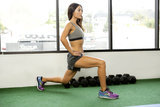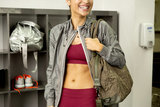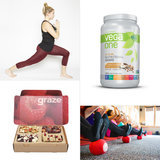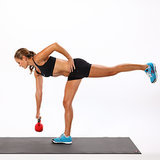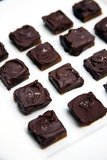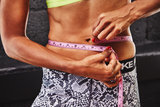Healthy lifestyle
A healthy lifestyle is one which helps to keep and improve people's health and well-being.Many governments and non-governmental organizations have made big efforts in healthy lifestyle and health promotion.
Mental Health
Mental health can be considered a very important factor of physical health for the effects it produces on bodily functions. This type of health concerns emotional and cognitive well-being or an absence of mental disorder.
Public health
Public health can be defined in a variety of ways. It can be presented as "the study of the physical, psychosocial and socio-cultural determinants of population health and actions to improve the health of the population.
Reproductive Health
For the UN, reproductive health is a right, like other human rights. This recent concept evokes the good transmission of the genetic heritage from one generation to the next.
Health
Health is a state of complete physical, mental and social well-being, and not merely the absence of disease or infirmity.
mardi 2 février 2016
What If Soda Commercials Told Us the Truth?

Oh sweet, sweet liquid sugar. It's so cold and refreshing and so, so bad for us. But the soda companies don't want you to realize that it offers absolutely zero nutritional value - they need to profit, right? Yes, even diet soda is bad for you. But we don't have to tell you that. This hilarious commercial spells it out perfectly. "Mmmmm, caramel dye."
9 Cringe-Worthy Moments a Dieter Experiences on a Date

When you're a devoted healthy eater, it's hard to go out to eat at a restaurant, period. After all, you can never be completely sure of what's going into your dish. But when you add a date who you're hoping to make a good impression on into the mix, things can get awkward. As if dates weren't nerve-racking enough, now you have to spend part of the evening dodging the dessert menu like the plague. It would be ideal to meet someone in a health-conscious environment, say the gym or Whole Foods, so you at least know that you're somewhat on the same page with food. But life isn't a rom-com, and Ashton Kutcher won't be handing you a bouquet of carrots like in No Strings Attached. You may not care what your date orders, but ugh, please don't insist that I nosh on the bread basket.
This Is the Absolutely Worst Weight-Loss Mistake You Can Make

You've got slimming down on the mind, and you already know that eating veggies is the number one thing you should be doing to lose weight. But if you're new to this healthy lifestyle, you'll also need to know what mistakes you absolutely should not make - they could end up causing you to gain weight!
So we asked certified dietitian Leslie Langevin, MS, RD, CD, of Whole Health Nutrition to share the biggest mistake she sees people making when trying to drop pounds. Her answer? "Cutting out too much." Some people feel like they need to stop eating everything that's "bad" for weight loss, like bread or all carbs (even fruit), sweet treats, alcohol, meat, and/or dairy. While doing a diet reset by ditching processed and nutrient-void foods and switching completely to whole foods definitely has its benefits, "limiting to protein shakes and cutting out all carbs" doesn't work for long-term weight loss. Sure, a person will lose weight, but that kind of diet is impossible to sustain. As soon as you go back to eating all those delicious off-limit foods like cookies, ice cream, wine, and pasta, the weight will come back on, and the cravings and binge-eating can also come on strong.
Another form of this is eating super restrictive all week, and then once the weekend comes, going crazy and eating whatever you want. Leslie says, "A starved body during the week will hoard calories on the weekend if it is a normal pattern." If you try to be "good" all week by eating a diet that is completely deficient in all things tasty, you'll feel so deprived and depressed about it that you won't be able to control those natural cravings, forcing you to overindulge. You'll end up consuming way more calories than you would normally, which can make the scale numbers go up.
Eating healthy shouldn't be so black and white. Leslie suggests moderation, also known as the 80/20 rule. It involves eating clean and healthy 80 percent of the time, and then 20 percent of the time, you have the freedom to indulge a little. For those who eat three meals a day, it works out to about three "cheat" meals a week. This eating lifestyle works because as Jessica Alba's trainer Yumi Lee says, "You can't be 100 percent all of the time, but you can be 80 percent all of the time." Allowing you to satisfy cravings during the week translates to greater success in the long run, so this is a great way to have your cake, and lose weight, too.
Related: Yes, You Can (and Should!) Eat Chocolate Each Day With These 100-Calorie Desserts
Step-by-Step Guide on the Best Ways to Cook Tofu
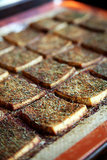
Your diet could use more protein, but let's face it - it can do without added saturated fat and cholesterol. I have one word for you: tofu. Yes, this amazingly versatile vegetarian food is just the thing to fill you up and sustain your energy to help you defeat hunger and drop pounds.
Because I've been a vegetarian since the ripe age of 13, friends keep asking advice on how to cook tofu so that it's not squishy and gross! Well, here's a simple step-by-step guide to preparing this white wonder in three tasty ways.
Healthy Recipes You Need to Try ASAP

It's time to freshen up your virtual recipe box and experiment with some new foods and learn new ways to cook with your standby ingredients. We've rounded up our favorite recipes featuring foods trending in the healthy cooking sphere to help you bring your kitchen to life this year. Read on to see why you should be eating these foods and fun recipes to cook with these go-to ingredients.
So Here's What I Learned After a Week With a Fitness Tracker

Ah, fitness trackers. The ever-popular tiny tool that's designed to help you determine if your life is, well, on track. Are you moving enough? Walking enough? Are you fitness-ing enough?
I've utilized such devices in the past, from bare-bones iPhone apps that logged workouts to clunky pedometers that rattled when I so much as sneezed. The information they've provided me has always been interesting - I'm kind of a big fitness fan, so anything I can learn about my workouts is invaluable - so when the opportunity came to wear a slick Jawbone UP2 fitness tracker from the POPSUGAR Must Have Box for a week and discuss my feelings about it, I was reasonably curious: What could this tell me?
Well, a lot it seems. Here's how I felt after wearing the wireless activity and sleep tracker.
I was surprised by how lightweight it was
Not that I was expecting it to feel like a dumbbell, but I was pleasantly relieved to learn it was thin and unfussy.
It wasn't distracting
I'm very much aware that I have a lot of devices. I have phones and iPads, and enough tangled cords and wires to knit a sweater, albeit an electric sweater (someone should do this, yes?). The last thing I need is another time suck to turn me into a zombie. But the UP2 tracker wasn't distracting in the least. There's a simple band with three indicator lights, and that's it. Everything you need to know is sent directly to the UP app. So while you have to download an app and open it up to learn anything, the flow feels seamless. It was really nice not having to train myself to pay attention to my arm. I just wore the band and forgot about it.
I ran like a champ
My high school track coach used to tell me to run like I was holding potato chips. Not a bag of potato chips, but a single chip in each hand. The idea was that they were fragile, and if my hands were tense I'd smash the chip. I'm still an avid runner - not an impressive one by any means - and my routine sessions are pretty by-the-book: three miles on flat road, maybe with a few intervals in there if I'm feeling good.
In the week that I wore the UP2 tracker, I went on two jogs, and both times I noticed that my potato chip-carrying form had drastically improved. My shoulders were back, my stride was loose, and the proverbial greasy chips were unharmed. Something about catching the UP2 tracker in my peripheral as I ran made me feel - okay, this is going to sound dorky - like an athlete. So I ran like one.
I failed to track other workouts correctly
In addition to my two runs, I took a bootcamp class and two cycling classes, and went to an electronic concert where I jumped my butt off because that's what dancing looks like when you're in your 30s, and I'm not sure that my performance was tracked appropriately. In the case of the workout classes, I didn't log onto the UP app to tell it that I was cycling, so the disparity in logged steps is most likely due to user error. But that's who I am. I can be lazy with these things.
Sleep tracking is the new everything and I never want to stop
I've never tracked total sleep or sleep quality before, so this offering blew my mind. Again, I didn't have to tell UP that I was going to bed; the motion sensor embedded inside of it knew by my lack of movement that I was snoozing. But here's where it was really cool: it didn't start my sleep cycle when I laid down to watch Netflix - it actually started when I fell asleep. What? I know. And it gets better. In the morning the app displayed a handy graph of my entire cycle, including heavy sleep vs. light. While I was only privy to a week's worth of data, I saw a huge connection between the amount of time I spent in "light sleep" and my alertness the following day. This feature was enough to hook me.
I never charged it
In a world where literally nothing lasts, I could not believe the heart on this thing - it never gave out. Even as I'm typing this it has some juice left, which is just wildly impressive. Also, and this connects to one of my points above, there's no long rope of charging cords. It's a small 3-inch plug that connects to your USB port.
Speedy Recovery: 10 Ways to Ease Sore Muscles
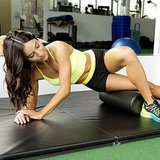
After an intense cardio workout or weight-training session, you might feel extreme exhaustion, muscle soreness, and nausea. This hit-by-a-truck feeling that you often wake up with the day after working out is called DOMS, which stands for delayed onset muscle soreness. Luckily, there are many preventative measures you can take to avoid it. Here's a quick list of 10 steps you should always take before, during, and after going to the gym.
- Drink a cup or two of caffeinated tea or coffee before working out to increase muscular strength and endurance and reduce the chance of soreness.
- Eat a pre-workout snack that is low-fat and high-carb with some protein.
- Warm up properly with a little cardio and dynamic stretching to prep your muscles and joints for your workout.
- Do not stop and start moving while exercising; instead, keep steadily moving so fresh blood will be sent to repair your taxed muscles.
- While you are working out, stay hydrated by drinking water every 15 minutes.
- If you are sweating a lot, it's important to replace lost electrolytes with a sports drink or other electrolyte-rich foods, because these essential salts regulate heartbeats, muscular contractions, and nerve function.
- After your workout, stretch and use a foam roller to massage out knots and increase blood flow to your muscles.
- Immediately after working out, eat a post-workout snack that has a 4:1 ratio of carbs to protein to help restore the nutrients lost in the muscles during the workout. Try chocolate milk or a protein snack washed down with tart cherry juice, which has also been shown to reduce soreness.
- Consider getting a sports massage to increase circulation and break up major knots in problem areas that are always sore.
- Take a cold shower post-workout to reduce inflammation of the muscles. Or try an ice bath, which has been shown to reduce muscle soreness by 20 percent.
Dos and Don'ts of Pre-Workout Snacks
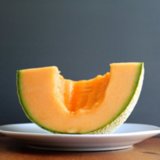
You nosh on a bunch of melon and head out for a run. Five minutes into your workout, you experience one of the worst cramps in your belly. You try everything to make it go away: massaging it, slowing down your pace, and raising your arms in the air, but walking is the only thing that helps. You curse that stupid cantaloupe and watermelon for ruining your run.
Certain foods can cause major digestive upset, so here are some tips on choosing an appropriate pre-workout snack.
- Fiber is not your friend: All that bulk that gets things moving in your system is bound to prevent you from moving when you exercise, since it can cause gas pains and may even necessitate a trip to the ladies' room.
- Go for a combo of protein and carbs: Carbs rather than protein offer your body fuel, so make sure your snack has an emphasis on carbs. Simple carbs are best, since they digest more easily than complex ones.
- Avoid foods that personally give you gas: A ripe pear with a handful of nuts might be the perfect prehike snack for your best friend, but that dangerous combo could be a tummy time bomb for you. If you've had bad luck with a food giving you gas in the past, it's not the best choice for your pre-workout snack.
- Remember it's just a snack: You don't need to eat a large quantity of food. If you do, then chances are you'll end up with cramps or a feeling of sluggishness. Shoot for a nibble that's about 150 calories.
- Choose energy bars wisely: Many contain 200 to 250 calories, so you'll want to eat only half and save the rest for after your sweat session.
- Timing is everything: Nosh on your snack about 30 minutes before setting out to exercise.
Here are some snack ideas:
- Half a slice of whole wheat bread with a little almond butter
- Half a banana mixed with half a cup of Greek yogurt
- A few baby carrots with a small handful of peanuts
- Two tablespoons cottage of cheese mixed with a quarter cup of sliced grapes
- An ounce of cheese with some crackers
Stop Slacking in Your Barre Class With 4 Expert Tips
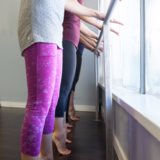
Barre can be one of those tricky classes to get the hang of in the beginning – from the form to the terminology, if you're a barre newbie, it sometimes takes a few classes to feel comfortable and confident. But once you master the art of tucking and get comfortable with the class's format, it can also be really easy to "phone it in," and just go through the motions. Don't do that!
So how do you get the most out of your workout? We consulted Pure Barre's senior master trainer, Shalisa Pouw, to ask how intermediate barre-goers can get the get the most out of their workout.
When It Starts to Burn and Shake, Hold It Right There!
Pouw says, "The real work starts right when you want to give up. When your muscles start to burn and shake, you know you are really fatiguing them and that's where the results happen! So next time you feel like you want to drop your weights or come out of position, close your eyes, breathe, and try and hold on for 10 more seconds." Easier said than done, right? But trust us, you're going to reap the rewards of some phenomenal results.
Find Your Focus Muscle
Although it's easy to zone out or let your mind wander in class (or solely focus on how much your abs are burning), take care to really listen to your instructor in class. This is particularly important for muscular isolation. When they say "move from your core," make sure the movement isn't coming from your thighs - this seems obvious, but can be much harder in practice. "By finding your target muscle in each position, you can ensure that you are getting the most out of the work," says Pouw. "If you are in a seat [butt] exercise doing tiny lifts of the leg, the movement should stem from the seat rather than the foot or the knee."
Let The Music Drive You
Have you ever had the "I NEED BEYONCÉ IN THIS MOMENT" thought mid-squat? Barre is rooted in dance, so it makes sense that music plays a big part of the routine, and can carry you through a tough set of movements. "There's nothing like your favorite song to help motivate you to stay in position," says Pouw. "The music will follow the energy of class, so feel free to close your eyes, sing along, and let the music carry you through your workout!"
Focus on Form
This tip is from personal experience: form is of the utmost importance in a class like barre – if your form is off, you're not getting the true, intended exercise, and that's what you're paying and working for, isn't it? Before you move up to heavier weights or a tougher progression of a pose, ensure that you've mastered your form. Tucked seat, tight abs, can't lose.
lundi 1 février 2016
Run a Faster 5K With Our 6-Week Plan
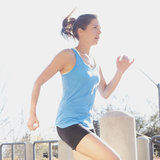
If you're looking to get a new personal record in 2016, we have a 5K training plan for you. Designed for experienced runners, the plan is full of speedwork to help you push your training pace and get that new PR (personal record) on race day. Along with tempo runs and intervals, we've added a dynamic strength-training workout to keep your legs, glutes, and joints strong to help you run even faster.
And we are here to support your speedy endeavors with running tips to improve your form, playlists to keep you motivated and on pace, and advice on nutrition and recipes to support your goals.
Check out the training plan below, print it, and get at it!
Extra Credit
Here are guides to help with your nonrunning training.
Why You Should Give Pea Protein a Chance

Pea protein: it's pretty much exactly what it sounds like, a plant-based protein that's been extracted from peas, yellow ones. The process for isolating the protein is a lot less scary than you might expect: manufacturers simply mill dried peas into flour, separate the starch from the protein, and then use the protein as a food additive in everything from almond milk to vegan meatballs.
But even if you are the furthest thing from a vegetable-lover - like, your idea of eating your veggies amounts to the lettuce and tomato on your beloved BLT - you still ought to give pea protein a chance, and here's why:
It's surprisingly high in protein. An average serving of pea protein isolate has about 20 grams of highly bioavailable protein. That's more than three times the amount of protein in a large egg, twice the protein as 10 almonds, and equal to the amount of protein in a hamburger.
It's super hypoallergenic. Pea protein is naturally dairy-free, soy-free, egg-free, and gluten-free. So if you are allergic or avoiding any of these foods - no problem!
It has a neutral flavor. Looking to amp up the protein in your go-to pancakes, muffins, or bread recipe? Look no further than pea protein. Unlike most protein powders out there (think: very, very vanilla), the flavor is pretty much unflavored.
It's all about diversity. Even if you're perfectly content with your current sources of protein, why not throw pea into the mix? "A healthy diet is a diverse diet, and we see pea protein as part of that diversity," commented Brian Kincaid of Beyond Meat, an innovative producer of plant-based meat substitutes backed by Bill Gates and Twitter cofounder Biz Stone.
Ready to give it a go? Read on for our roundup of six taste-tested pea-protein products readily available at a supermarket near you.
Show Your Love With These Fitness Valentine Gifts

This roundup of fitness treats will make your valentine's next workout extra festive - from dreamy yoga essentials to gym bags that proclaim their love for pizza, there are plenty of ideas for your sweaty sweetie . . . or yourself! With the season of love upon us, why not show some TLC to yourself and your body?
7 Nutrition Myths to Stop Believing ASAP

The following post was originally featured on fANNEtastic Food and written by Anne Mauney, who is part of POPSUGAR Select Fitness.
Now that it's the New Year, I thought it was timely to share a blog post about some of the biggest nutrition myths floating around out there - and why you shouldn't believe them.
1. It's healthier to eat egg whites rather than whole eggs.
Actually, the yolk is where a lot of the nutrition is! Most people don't know that the yolk contains over 40 percent of the protein in a whole egg - and more than 90 percent of the calcium, iron, and B vitamins. It also contains all of the egg's fat-soluble vitamins (A, D, E, and K). Plus, that extra fat will help to keep you full and satisfied for longer than you would be with just the whites! But what about cholesterol? Research is showing that cholesterol in food has a much smaller effect on blood levels of total cholesterol and harmful LDL cholesterol than we thought. In fact, moderate egg consumption (defined as one per day) has not been found to increase heart disease risk in healthy individuals. (sources: 1, 2) The 2015 Dietary Guidelines (which finally just came out last week) have also dropped the recommendation to limit cholesterol, which I was happy to see.
2. Choose fat-free or low-fat dairy and other products.
It drives me crazy that many people still think (and the Dietary Guidelines are still recommending) fat-free and low-fat dairy as a healthier option that full fat. During the 1980s, there were a couple major reports that came out that would alter the way Americans ate and kick off the low-fat and anticholesterol craze that I'm sure many of us remember well (and might still be abiding by). In these reports, decreasing saturated fat and dietary cholesterol were labeled as the single most important changes that one could make to improve their health, which translated into a national food production frenzy to create low-fat diet products. Everyone started eating eggs without the yolks, low-fat crackers, low-fat cookies, low-fat dairy products, low-fat everything. But something strange happened - Americans continued to get heavier than ever, and their overall health wasn't improving, either.
I could go on and on about why this is (and you can read more about it in scientific terms in a guest post I wrote for my friend Kath on the topic of why it's good to eat more fat), but let's just focus on one of the big points with the fat issue for now. Here's the thing: when a product is artificially made low fat or fat free, it won't be as satisfying, due to the absence of fat, which keeps you full longer. This can lead to overeating because you never feel satisfied. Also, artificially fat-free/low-fat items often have sugar and other fillers added - or you'll add more sugar yourself because it doesn't taste good without the fat. For example, think of having a fat-free latte. It needs a fair amount of sugar/syrup to taste good, right? Same with fat-free yogurt. Next time, if you are a dairy fan, try a full-fat latte or full fat yogurt - you'll notice it's much more satisfying and you don't need nearly as much sweet to make it good. Same thing goes with products like peanut butter - go for the natural full-fat version to skip the additives and sugar and up the satiety factor.
3. Granola and yogurt is a healthy breakfast.
Granola and yogurt can certainly be a healthy choice, but it depends on the products being used. Often granola and yogurt are really just dessert in disguise due to the large amount of sugar found in many brands! Look for a plain, full-fat Greek yogurt for a protein punch without added sugar, and aim to choose a granola that has less than 10 grams of sugar (at a maximum) per serving. Then, add fresh fruit for sweetness instead and some nuts for healthy fat and staying power!
4. Multigrain and wheat breads are a healthy choice.
Look for 100 percent wheat or 100 percent whole grain on the label, because unless 100 percent is noted, it's likely just white bread with a tiny grain of something added - or with caramel color added to make the bread look darker. Even better, check that ingredient list. Is it short and full of things you recognize as real food? If not, put it back on the shelf. I usually go for sprouted grain breads - better real food ingredient lists!
5. Potatoes are bad for you.
While their orange cousins have been hanging out in the nutrition spotlight, white potatoes have gotten a bad reputation over recent years for being essentially empty carbs. Not true! White potatoes are packed with fiber, which helps keep you regular and aids in feeling full. They also have more potassium than sweet potatoes! A USDA study of potatoes recently found levels of phytochemicals that rival the amounts found in broccoli, spinach, and brussels sprouts. Eat up! I like having them roasted. :) (See also: Garlic Herb Roasted Veggies.)
6. Diet soda aids in weight loss.
Think grabbing a diet soda will help maintain your weight? Think again. Several large studies have linked artificial sweeteners to weight gain. (source) Why? The research isn't entirely decided, but artificial sweeteners seem to actually increase appetite and contribute to sweet cravings by training taste buds to favor sweeter flavors. It may also confuse the body's natural mechanisms for regulating caloric intake.
I wouldn't suggest grabbing a regular soda in its place (clearly real sugar isn't good for us, either, especially in large quantities), but rather decreasing intake of diet sodas as well as other artificial sweetener sources, like sugar-free gum and other sugar-free products. Another thing: artificial sweeteners might be making your stomach hurt.
7. Coffee creamer is a healthy alternative to half and half or whole milk.
Take a look at the ingredient list on that coffee creamer - it's usually packed with trans fat (here's what trans fat is and why you should avoid it) and all sorts of other not so great additives. Here's the ingredient list on a vanilla coffee creamer: sugar, partially hydrogenated vegetable oil, corn syrup solids, less than 2% of sodium caseinate (a milk derivative)**, dipotassium phosphate, natural and artificial flavor, mono- and diglycerides, sodium aluminosilicate, salt, carageenan.
Yeah, yikes. Stick with real milk or a nondairy alternative like almond milk, coconut milk, or soy milk!
My Aching Back! Yoga Sequence to Offer Relief
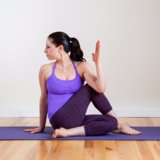
Whether you woke up with a tight lower back, your desk job has you aching, or you overdid it at the gym, here is a relaxing yoga sequence designed specifically to stretch your lower back. Since tight hips, hamstrings, and shoulders can often trigger discomfort and pain, this sequence will also lengthen those tension spots. Do this series of yoga poses any time your back needs a little extra love.
Why You Have a Nagging Night-Time Cough

You feel fine all day, but something happens when you tuck yourself into bed. A tickle in your throat leads to a nagging cough that only seems to happen at night, interfering with your sleep and leaving you irritable the next day. If you've ruled out the common cold or other respiratory infections, here are five common reasons you may be coughing at night.
- Asthma: Most people equate asthma with the image of someone gasping for air. Although this can definitely be a symptom, most people with asthma commonly experience a dry cough. Make sure to talk to your doctor about getting tested for asthma to rule it out as the cause of your coughing.
- Sinusitis: A chronic stuffy nose caused by allergies or a long-term sickness such as a sinus infection that won't go away could also be the culprit. When sinuses are clogged, the mucus can drip down the back of the throat (postnasal drip), causing that annoying tickle. If using a neti pot doesn't help, over-the-counter allergy meds or a prescription nasal spray could help clear your sinuses.
- Acid reflux: Acid reflux disease, aka GERD, can also cause coughing. When lying down, the acid in your stomach, which causes indigestion and heartburn, can also wash into your lungs. If you think that GERD is the problem, try eating a smaller dinner earlier in the evening and prop your head up on a couple pillows when you sleep. If this doesn't help, there are also OTC medications that work wonders.
- Iron deficiency: A diet lacking certain nutrients can also contribute to a chronic cough. If your body is low in iron, swelling and irritation in the back of your throat could be a symptom, which can lead to coughing. If this sounds familiar, then an iron supplement may be all you need.
- Check your drugs: Meds, like ACE inhibitors prescribed for high blood pressure, can create the side effect of a dry cough. Talk to your pharmacist to see if your coughing could be caused by one of the medications you're on.
Cut Back on Carbs With 25 Gluten-Free Breakfasts

For people who have committed to a low-carb diet or are dealing with a more serious gluten allergy, there are plenty of delicious breakfast options that won't leave you feeling deprived. When you first eliminate gluten, the whole process can feel a little overwhelming, but luckily, there are a ton of healthy and hearty breakfast options for a gluten-free diet. Here are some of our favorite recipes.
No Gym? No Problem! Try These 6 Easy and Effective At-Home Ab Moves
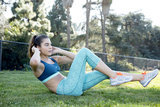
Core strength isn't rocket science. No need to overthink this. Below are six exercises. You've seen them before. You've done them before. You've wished they worked before. The difference? You'll be doing them in a sequence that is most conducive to targeting your core muscles.
The added bonus? You'll only be doing one set of each - until you can't do them anymore. That's right. You chose your intensity and your body will decide how far you can go. This allows you to progressively get better based on your own fitness level. You don't need some guy telling you to reach 12 reps if you can't get past eight on your first effort. You do your best each time and this plan will get you to your best core strength ever!
9 Relaxing Stretches You Can Do in Bed
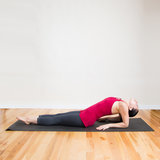
Stretching has a way of melting away stress and worry, but there's no need to unroll your yoga mat. Here are nine stretches you can do in your pajamas and your bed - either before you go to sleep or once your alarm goes off - or both! Do all nine if you have time, or just pick a few. Either way, you'll feel more relaxed, whether you're heading to the land of nod or waking with the sun.
17 High-Protein Breakfasts That Slash Carbs and Calories

When you start the day with a carb-heavy breakfast, the morning can sometimes drag, causing you to reach for that second cup of coffee. Try cutting down on carbs, and reach for one of these high-protein breakfast recipes instead. Whether you're on a gluten-free, Paleo, or vegetarian diet, there's a breakfast idea here to help you start your day energized and satisfied.












